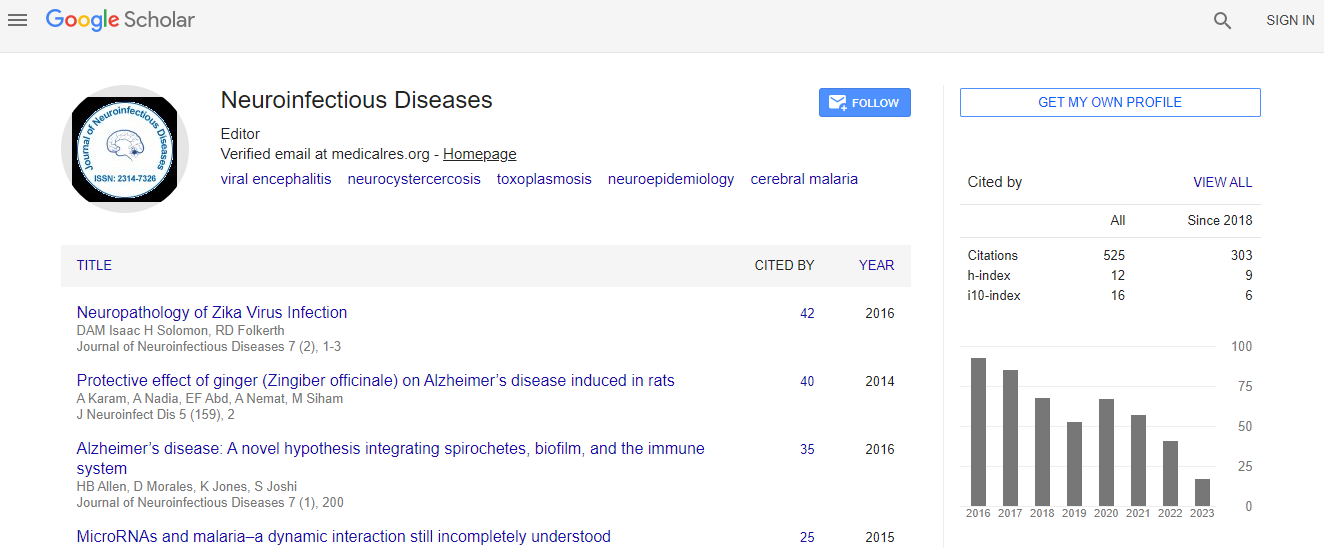Case Report
Nocardia farcinica Multiple Brain Abscesses in an Immunocompetent Patient
| Luisa Vinciguerra1*, Carmen Murr2 and Julian Böse1,2 | |
| 1Department GF Ingrassia, Section of Neurosciences, University of Catania, Via Santa Sofia, 78 - 95123 Catania, Italy | |
| 2Department of Neurology, Heidelberg University, INF 400, 69120 Heidelberg, Germany | |
| Corresponding Author : | Luisa Vinciguerra Department GF Ingrassia, Section of eurosciences University of Catania. Via Santa Sofia 78 - 95123 Catania, Italy Tel: +393488551601 E-mail: luisavinciguerra.doc@gmail.com |
| Received: July 11, 2015 Accepted: July 13, 2015 Published: July 16, 2015 | |
| Citation: Vinciguerra L, Murr C, Böse J (2015) Nocardia farcinica Multiple Brain Abscesses in an Immunocompetent Patient J Neuroinfect Dis 6:182. doi:10.4172/2314-7326.1000182 | |
| Copyright: © 2015 Vinciguerra L, et al. This is an open-access article distributed under the terms of the Creative Commons Attribution License, which permits unrestricted use, distribution, and reproduction in any medium, provided the original author and source are credited. | |
| Related article at Pubmed, Scholar Google | |
Abstract
Background: Nocardiosis is a rare infection caused by Nocardia species, that usually causes a solitary abscess as the most common manifestation in the central nervous system. Nocardia farcinica appears more virulent than the other subspecies, and the infection generally occurs in immunocompromised patients. We describe a case of primary multiple brain abscesses from N. farcinica in an immunocompetent host. Case report: A 66-year-old immunocompetent man was admitted with a 6-week-history of night sweats and progressive fatigability followed by intermittent diplopia, left facial nerve palsy, aphasia, dysmetria, loss of balance, disorientation and drowsiness. He had no history of fever, headache, vomiting or seizures. Cerebral magnetic resonance imaging (cMRI) displayed multiple supratentotial lesions and a wide confluent ponto-mesencephalic hyperintensity on fluid-attenuated inversion recovery (FLAIR) images. Most of the lesions showed ring gadolinium enhancement and partially diffusion restriction. Mild pachymeningeal thickening and enhancement were also detected. The brain biopsy and the microbiological evaluation revealed branching gram-positive bacilli, confirmed as Nocardia farcinica. Because of hydrocephalus occlusus caused by the space-occupying brain stem lesion the patient required temporary external ventricular drainage. Treatment with intravenous imipenem and cotrimoxazole was administered for one month and consecutively oral cotrimoxazole was maintained, with substantial improvement of neurological conditions. Conclusions: CNS norcardial infections may manifest as multiple brain or spinal cord lesions, diffuse cerebral inflammation, and meningitis mimicking other neurological disorders, especially tumors, and possibly delaying diagnosis and treatment. The mortality rates estimated for multiple abscesses due to Nocardia farcinica are significant. This infection might progress despite a specific therapy and tend to relapse. Early identification, appropriate and prolonged treatment are crucial for a favorable outcome.

 Spanish
Spanish  Chinese
Chinese  Russian
Russian  German
German  French
French  Japanese
Japanese  Portuguese
Portuguese  Hindi
Hindi 
